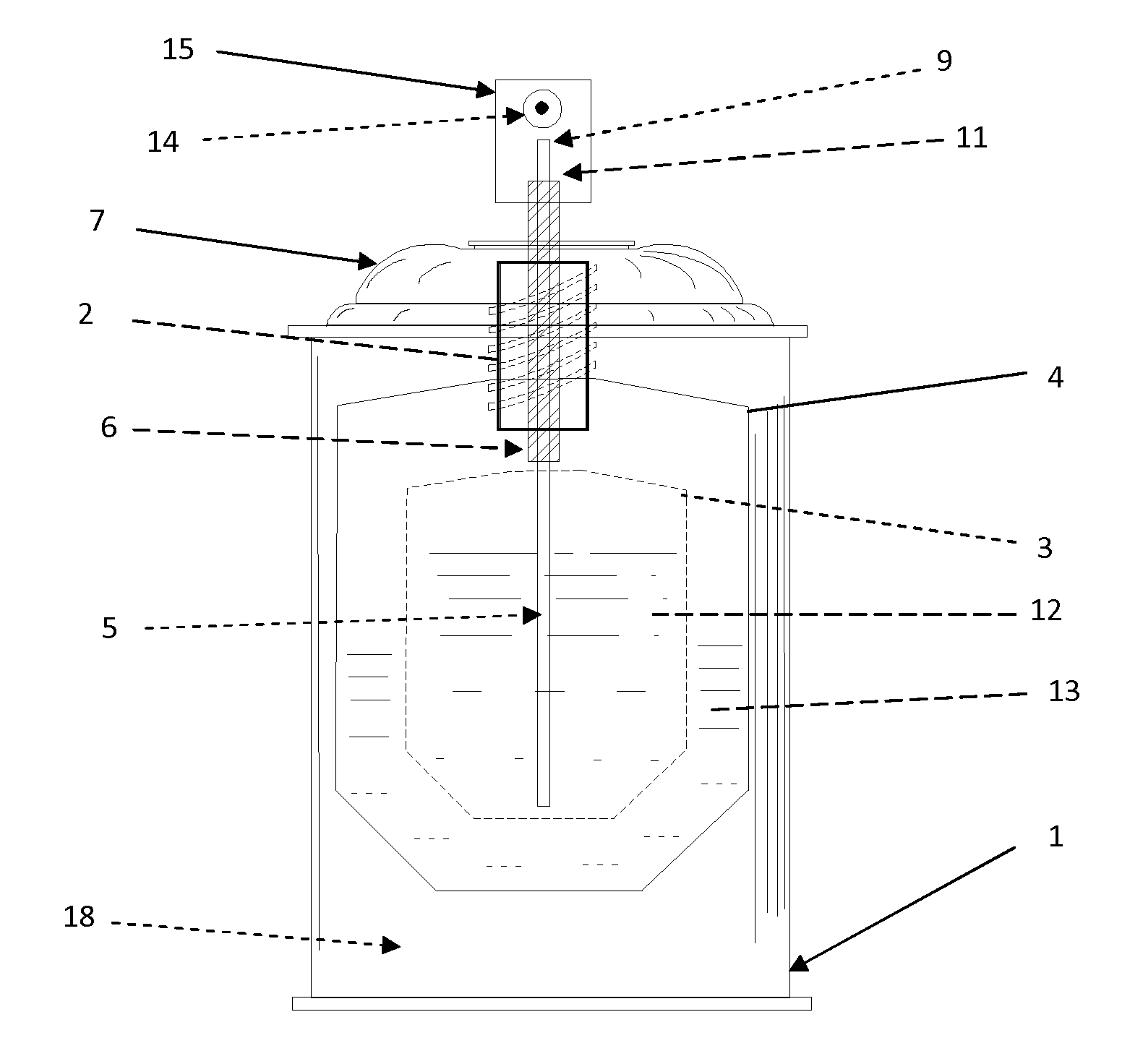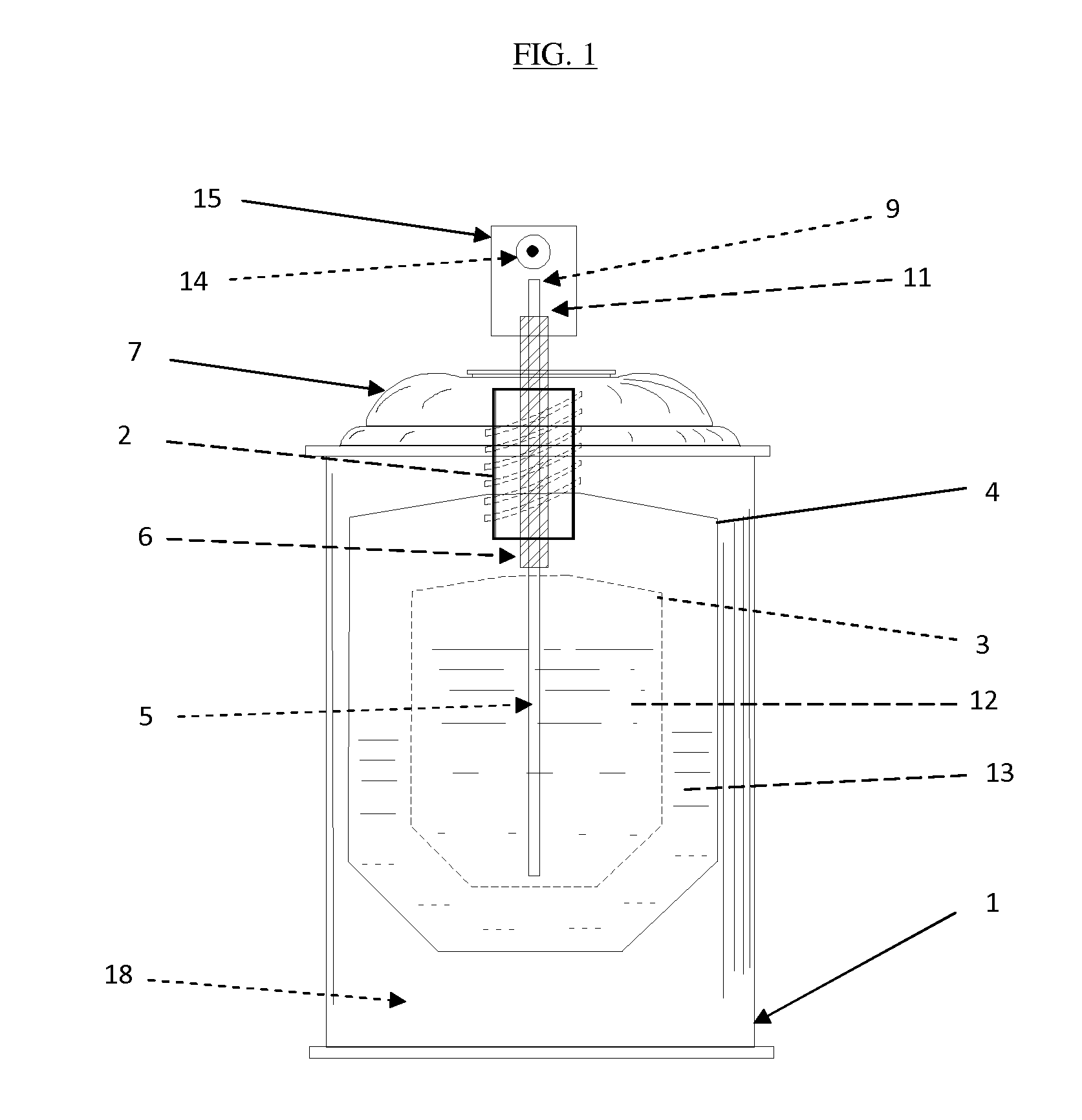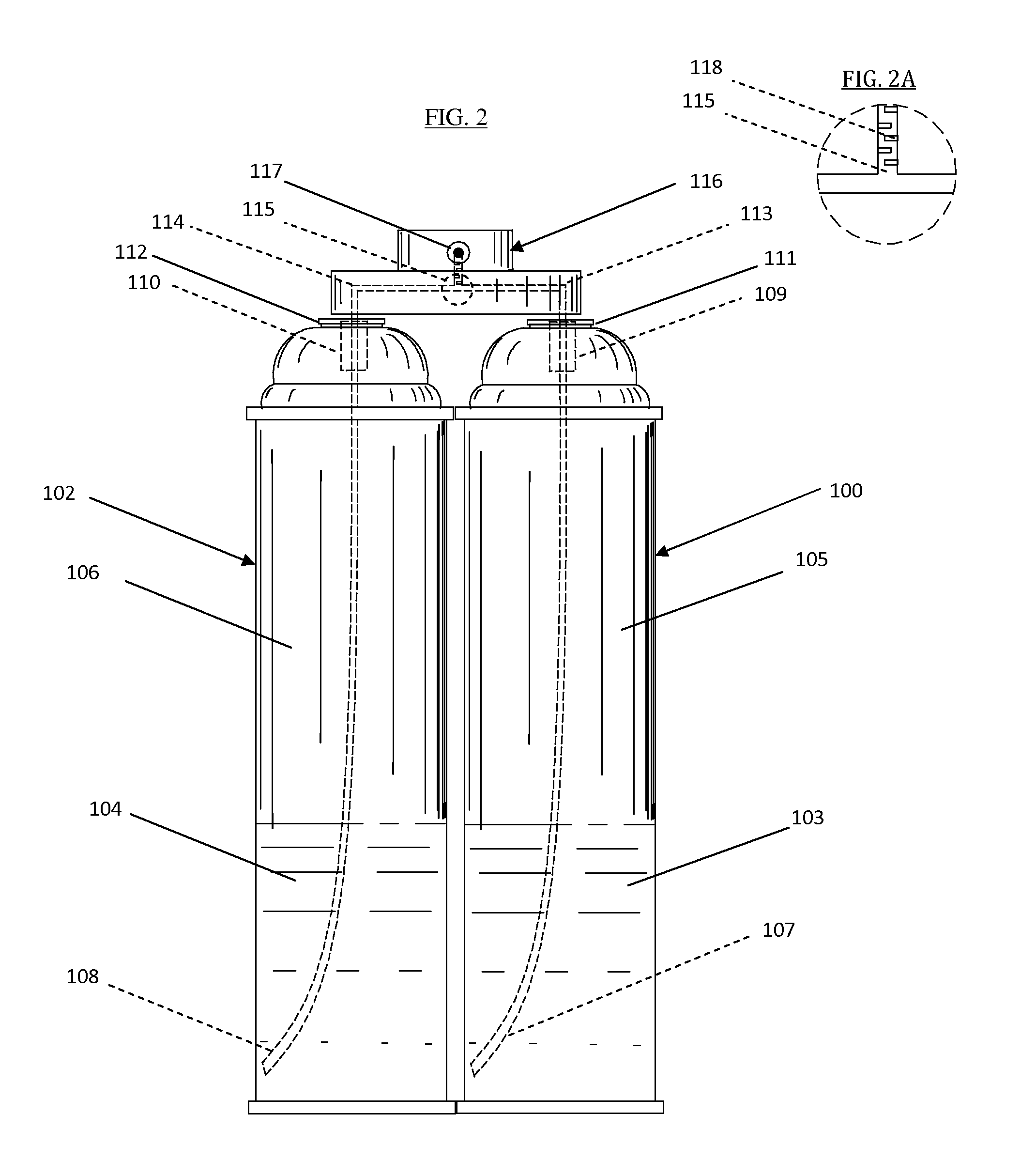Chemiluminescent Aerosol Spray
a technology of chemiluminescent spray and aerosol spray, which is applied in the direction of lighting and heating apparatus, liquid transfer devices, and lighting, etc., can solve the problems of insufficient light intensity insufficient illumination of even the smallest rooms, areas, and objects of chemiluminescent light sticks
- Summary
- Abstract
- Description
- Claims
- Application Information
AI Technical Summary
Benefits of technology
Problems solved by technology
Method used
Image
Examples
example 1
[0098]A reusable, blue aerosol spray chemiluminescent marker formulation was prepared by combining 5.42 grams of bis(2-carbopentyloxy-3,5,6-trichlorophenyl)oxalate (CPPO) and 0.059 grams of 9,10-diphenylanthracene into 80 grams of dibutylphthalate solvent. The mixture, designated as part A, was sonicated for 10 minutes to facilitate dissolution. The contents were decanted from the mixing vessel into a 30×160 mm aluminum aerosol cylinder, sealed with an aluminum mounting cup containing a butyl rubber gasket, a nylon tilt valve and a Teflon (PTFE) dip tube manufactured by Precision Valve Corporation (Yonkers, N.Y.). The sealed aerosol container and valve combination were injected with 6.5 grams of 1,1,1,2-tetrafluoroethane (TFE-134) through the valve stem to a pressure of about 50 pounds per square inch (psi). A separate mixture, designated part B was prepared by adding 2.91 grams of 35% hydrogen peroxide and 0.016 grams of sodium salicylate to a mixture of 64 grams of dibutyl phthala...
example 2
[0099]A viscous blue, chemiluminescent aerosol spray formulation, having a viscosity of approximately 100 centipoise (cps), was prepared by combining 5.20 grams of bis(2-carbopentyloxy-3,5,6-trichlorophenyl)oxalate (CPPO) and 0.057 grams of 9,10-diphenylanthracene and 3.2 grams of polyhydroxystyrene into 80 grams of dibutylphthalate solvent. The mixture, designated as part A, was sonicated for 10 minutes to facilitate dissolution. The contents were decanted from the mixing vessel into a 30×160 mm aluminum aerosol cylinder, sealed with an aluminum mounting cup containing a butyl rubber gasket, a nylon tilt valve and a Teflon (PTFE) dip tube manufactured by Precision Valve Corporation (Yonkers, N.Y.). The sealed aerosol container and valve combination were injected with 6.5 grams of 1,1,1,2-tetrafluoroethane (TFE-134) through the valve stem to a pressure of about 50 pounds per square inch (psi). A separate mixture, designated part B was prepared by adding 2.80 grams of 35% hydrogen pe...
example 3
[0100]A yellow foam able resinous, chemiluminescent aerosol spray formulation was prepared by combining 5.20 grams of bis(2-carbopentyloxy-3,5,6-trichlorophenyl)oxalate (CPPO), 0.057 grams of 1-chloro-9,10-bis(phenylethynyl)anthracene and 9.60 grams of isobutyl methacrylate into 80 grams of dibutylphthalate solvent. The mixture, designated as part A, was sonicated for 10 minutes to facilitate dissolution. The contents were decanted from the mixing vessel into a separate 30×160 mm aluminum aerosol cylinder, sealed with an aluminum mounting cup containing a butyl rubber gasket, a nylon tilt valve and a Teflon (PTFE) dip tube manufactured by Precision Valve Corporation (Yonkers, N.Y.). The sealed aerosol container and valve combination were injected with 6.5 grams of dimethyl ether (DME) through the valve stem to a pressure of about 50 pounds per square inch (psi). In a separate vessel, the part B was prepared by adding 2.80 grams of 35% hydrogen peroxide, 0.015 grams of sodium salicyl...
PUM
 Login to View More
Login to View More Abstract
Description
Claims
Application Information
 Login to View More
Login to View More - R&D
- Intellectual Property
- Life Sciences
- Materials
- Tech Scout
- Unparalleled Data Quality
- Higher Quality Content
- 60% Fewer Hallucinations
Browse by: Latest US Patents, China's latest patents, Technical Efficacy Thesaurus, Application Domain, Technology Topic, Popular Technical Reports.
© 2025 PatSnap. All rights reserved.Legal|Privacy policy|Modern Slavery Act Transparency Statement|Sitemap|About US| Contact US: help@patsnap.com



